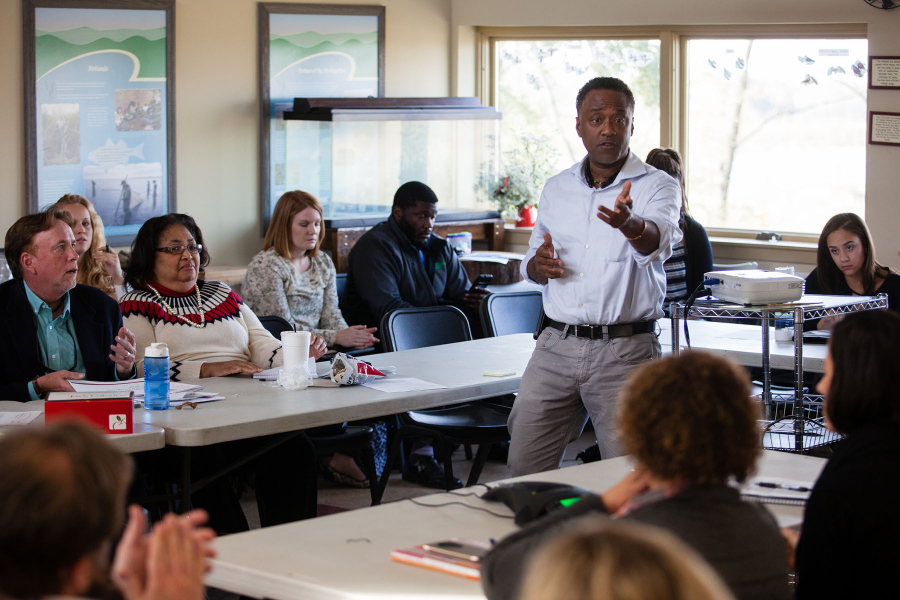Chesapeake Bay Program releases results of first-ever diversity profile
Partnership commits to increasing diversity in its restoration efforts

The inclusion of all types of voices and communities is critically important to the success of environmental protection and restoration efforts in an increasingly diverse watershed. Now, the Chesapeake Bay Program is taking steps to make sure the partnership and its staff reflect the diversity of that community through the release of its first-ever diversity profile assessment.
In 2016, the Alliance for the Chesapeake Bay, on behalf of the Chesapeake Bay Program, distributed a diversity profile to approximately 750 people who work for or with the partnership. The survey revealed that 84 percent of respondents identified as white, while just 13 percent of respondents identified as non-white. Meanwhile, 35 percent of the people in the watershed—which spans parts of six states and the District of Columbia—identify as non-white. In establishing this baseline, the Bay Program is taking an important first step in making its partnership reflect the watershed it represents.
“Setting a baseline and being transparent about the state of diversity in our partnership is a critical first step towards increasing the diversity of people who are engaged in the leadership and implementation of restoration efforts throughout the Bay watershed,” said Jim Edward, Chair of the Bay Program’s Diversity Workgroup.
Alongside goals like oyster health and water quality, the Chesapeake Bay Watershed Agreement includes a goal to increase the number and diversity of people who support and carry out conservation and restoration work. Under this goal, Bay Program partners committed to increasing representation in leadership and are assisted in this effort by the Bay Program’s Diversity Workgroup. A dynamic assembly of diverse voices from around the watershed, the Diversity Workgroup is dedicated to creating meaningful employment opportunities, promoting environmental justice and engaging underrepresented populations in conservation and restoration efforts.
“We are delighted that the Chesapeake Bay Program has not only taken stock of its diversity but has truly committed to ensuring that it reflects the racial diversity of the Chesapeake region,” said Whitney Tome, Executive Director of Green 2.0. “We look forward to collaborating with them on this initiative.”
When diversity is taken into account in the planning and implementation of conservation and restoration work, this work is likely to benefit underrepresented and underserved communities. Increasing the inclusion of previously underrepresented communities in our work fosters creativity, drives innovation and ensures all people in the watershed can share in the vibrancy of the region.

Comments
There are no comments.
Thank you!
Your comment has been received. Before it can be published, the comment will be reviewed by our team to ensure it adheres with our rules of engagement.
Back to recent stories